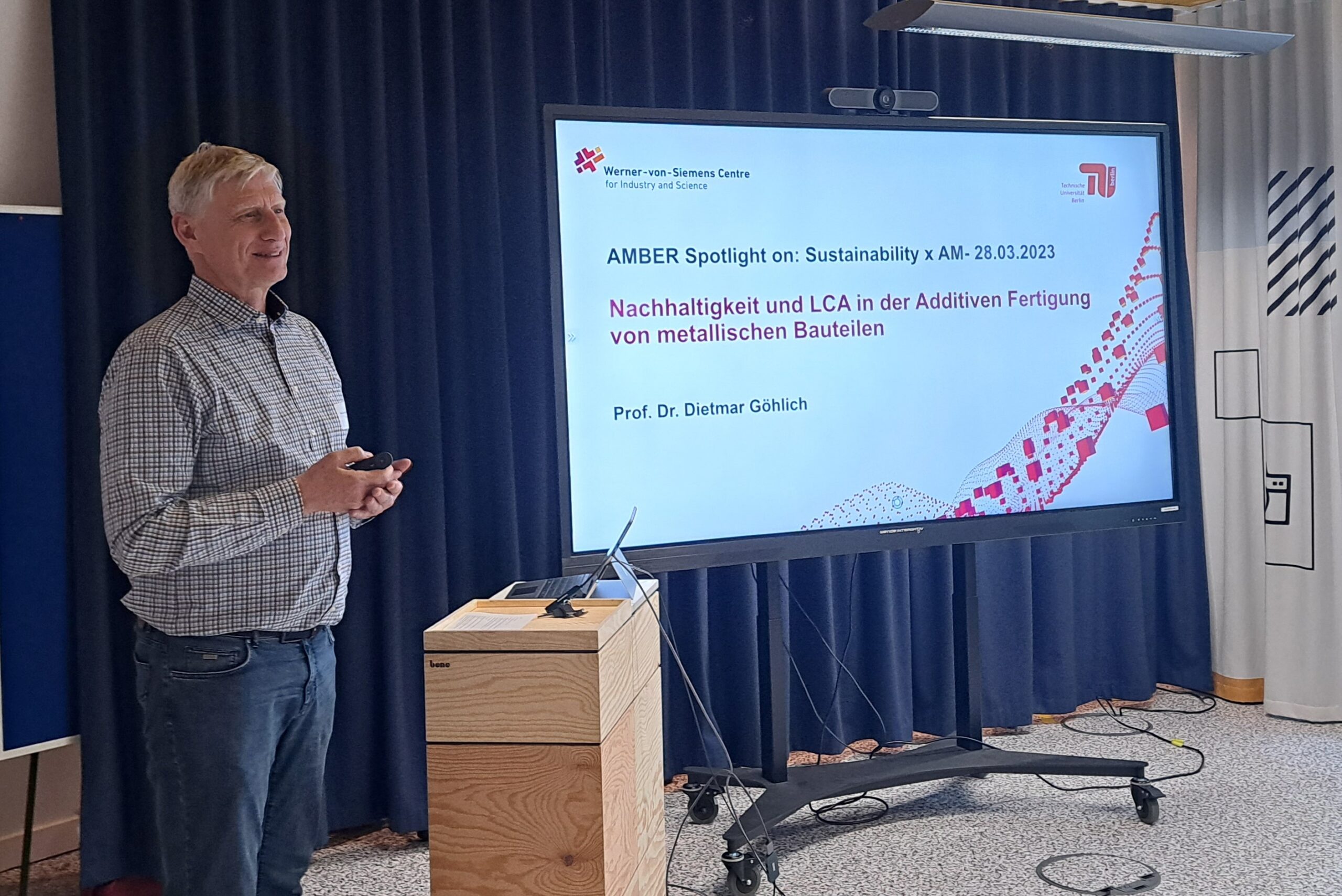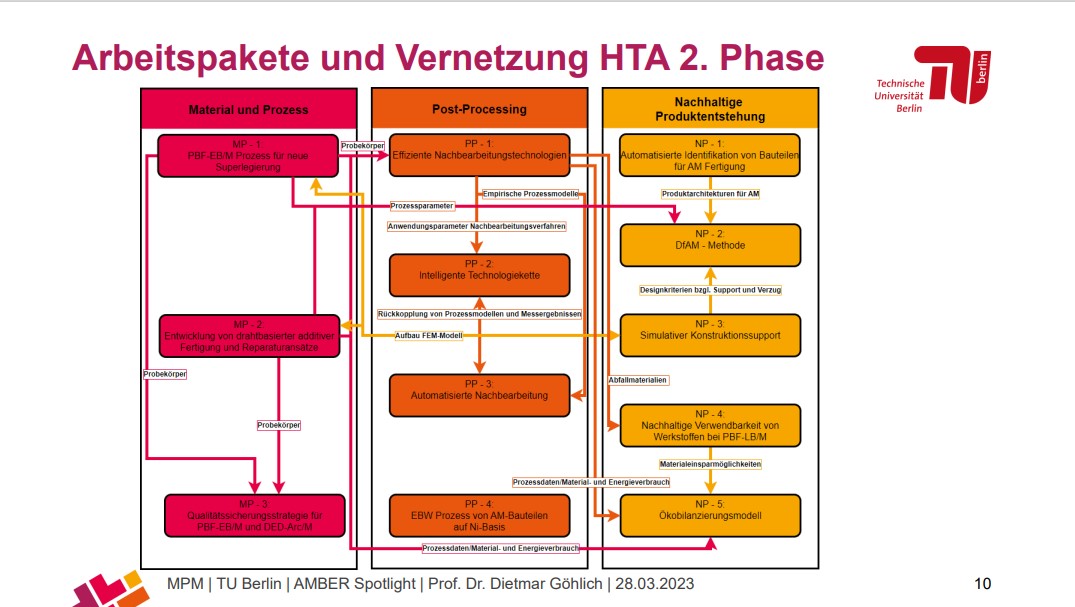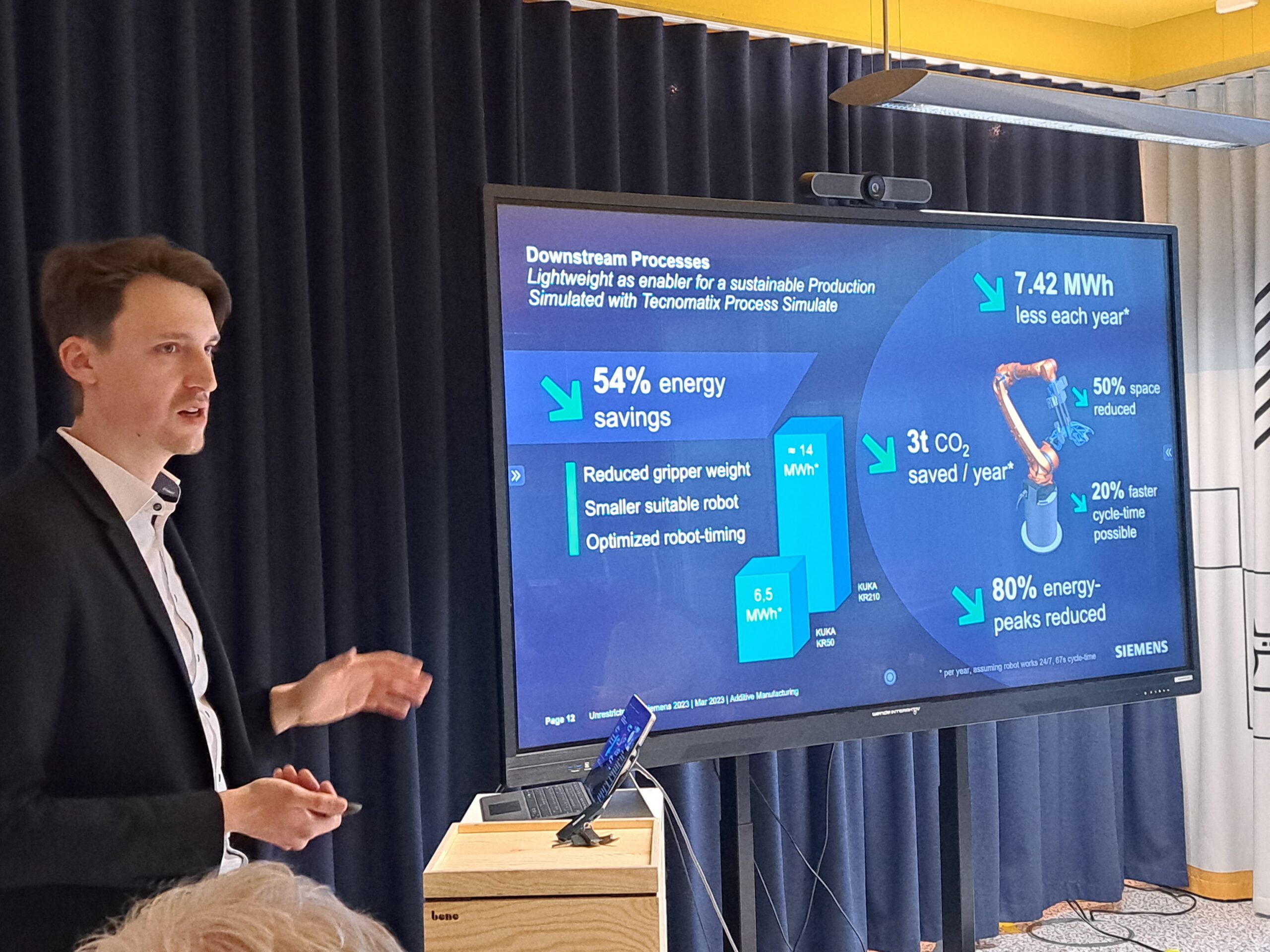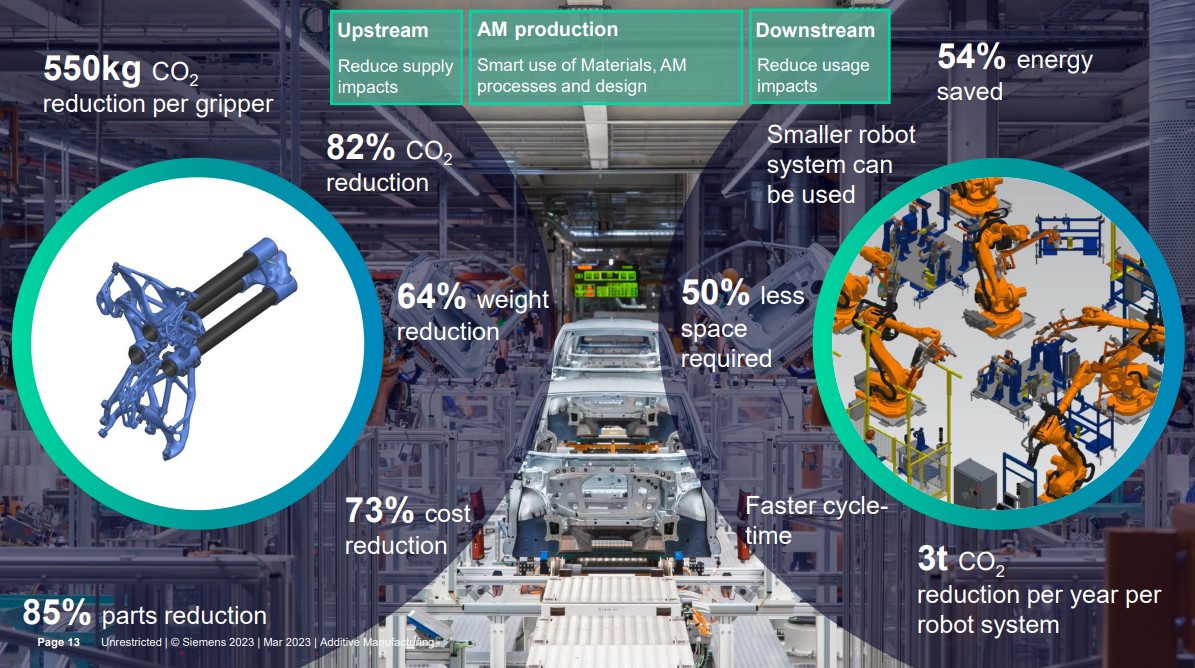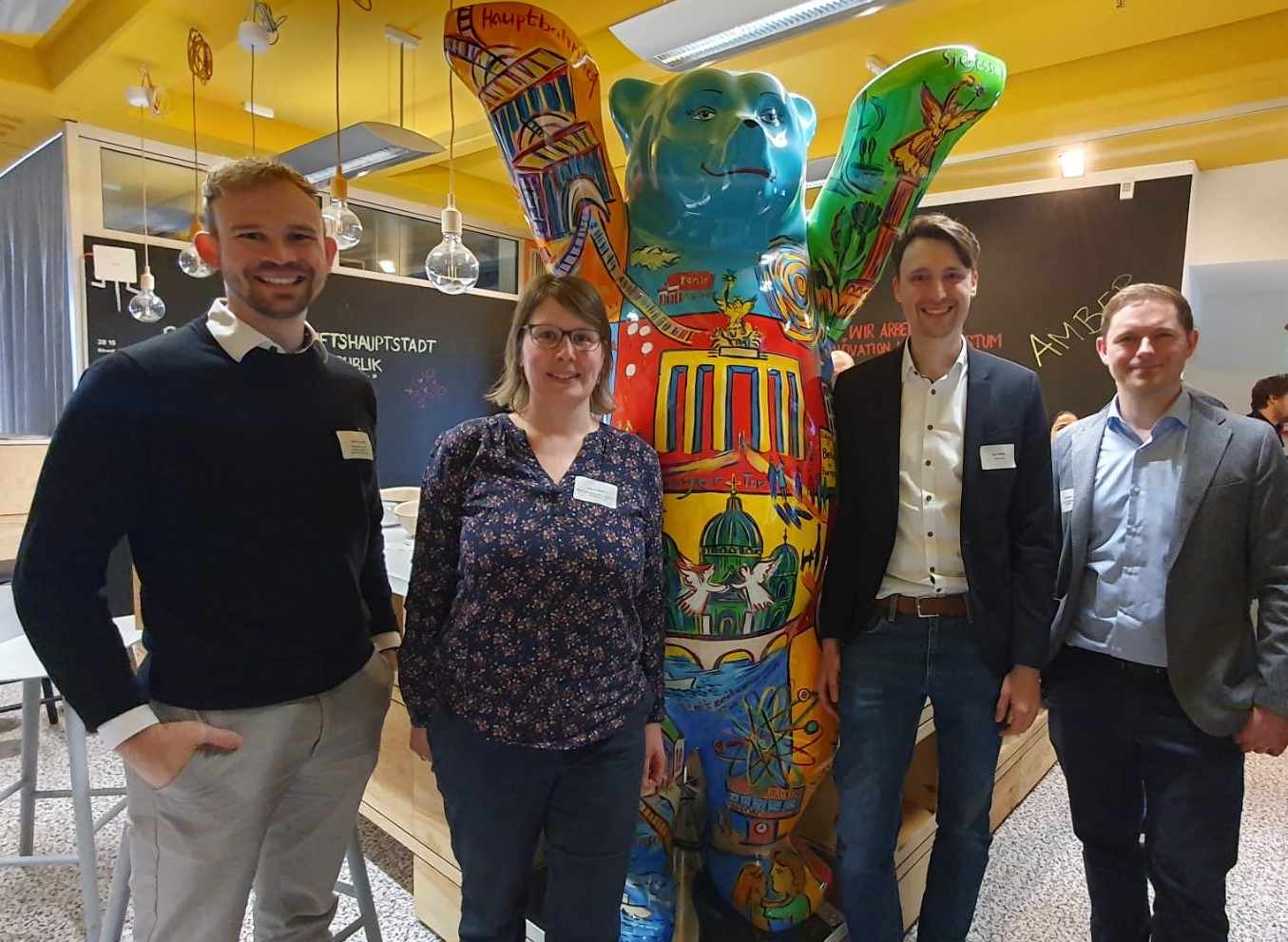It is of great importance to consider the issue of sustainability from the outset in the further development of AM processes and their areas of application in order to find the most promising areas of application for AM. In fact, it is often the case that at first glance AM offers no or only a few advantages over conventional manufacturing because, for example, the printing process is more cost- and energy-intensive than the machining of a component.
The benefits of AM technology can therefore only be properly assessed when the entire product life cycle (“cradle to grave”) is considered. This is where AM shows its full potential: By enabling completely new designs and structures, raw materials can be saved compared to machining and, in particular, weight can be saved in the final component. When a printed component is used in trains or aircraft, for example, this results in significantly reduced energy costs due to the permanently reduced vehicle weight. While the benefits of reduced weight in vehicles are still relatively intuitive to grasp, similar potential applications can also be found in other areas of application: Siemens AG, for example, has succeeded in redesigning the gripper of an industrial robot to save materials. Compared to the initial situation, 54% energy could be saved in the use of the robot. Since the re-design applied to numerous robots along an entire production line, there was a scaling savings effect for the entire plant.
Additive manufacturing: a sustainable technology?
On 28.03.2023, the WvSC together with Berlin Partner and the AMBER Cluster invited to a meeting on the topic of sustainability and additive manufacturing (AM).
During the afternoon, the connection between sustainability and AM was presented and discussed from different perspectives. It quickly became clear: contrary to one or the other popular science newspaper article, AM is not yet a widely established technology, but there are still many approaches for research and further development of additive manufacturing and its fields of application.
Insights into this can be found in the text below.
One challenge in practice is to identify those components in machines and plants that contain the greatest optimization potential through AM. For this reason, the TU Berlin is conducting research together with Siemens Energy as part of the research projects at the Werner-von-Siemens Centre on the automated identification of components for AM using artificial intelligence. Not only design parameters, but data over the entire component life cycle are taken into account.
This differentiated view of AM by the speakers positively surprised some of the participants. The event, which was curated by WvSC e.V. together with Berlin Partner, was convincing in that the speakers presented AM technology realistically in terms of potentials and hurdles (e.g. keyword powder atomization). This provided numerous opportunities for discussion during the breaks of the event and, of course, also ideas for future joint projects in the AM ecosystem and on Berlin’s way to becoming the 3D printing capital of Europe.
